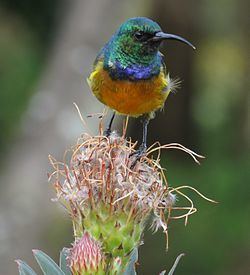Class Aves Family Nectariniidae Rank Species | Phylum Chordata Order Passeriformes Scientific name Anthobaphes violacea | |
 | ||
Genus AnthobaphesCabanis, 1850 Similar Southern double‑collared sunbird, Cape sugarbird, Malachite sunbird, Sunbird, Nectarinia | ||
Orange breasted sunbird on table mountain cape town south africa
The orange-breasted sunbird (Anthobaphes violacea) is the only member of the bird genus Anthobaphes; however, it is sometimes placed in the genus Nectarinia. This sunbird is endemic to the fynbos habitat of southwestern South Africa.
Contents
- Orange breasted sunbird on table mountain cape town south africa
- Orange breasted sunbird nektarnik przyl dkowy anthobaphes violacea
- Description
- Distribution and habitat
- Diet
- Breeding
- Conservation status
- References
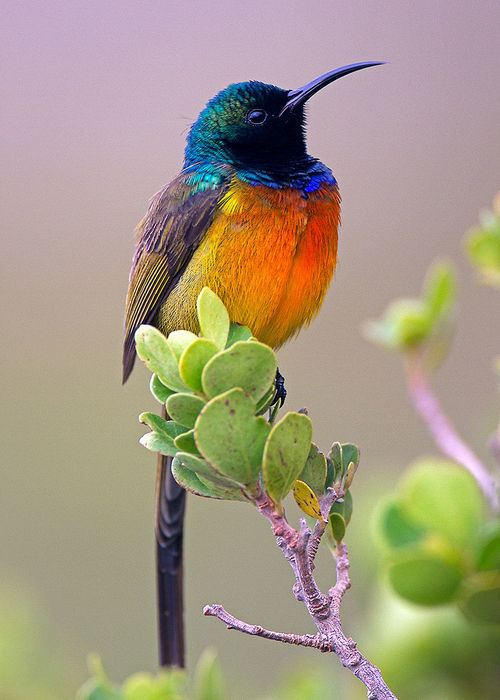
Orange breasted sunbird nektarnik przyl dkowy anthobaphes violacea
Description

As with other sunbirds the bill is long and decurved, that of the male being longer than that of the female. The bill, legs and feet are black. The eye is dark brown. The head, throat and mantle of the male are bright metallic green. The rest of the upper parts are olive green. The upper breast is metallic violet and the lower breast is bright orange, fading to paler orange and yellow on the belly. The tail is long and blackish, with elongated central tail feathers, which extend beyond the other feathers. The female has olive-greenish grey upperparts and olive yellowish underparts, paler on the belly. The wings and tail are blackish. The juvenile resembles the female.
The call is a twangy, weak ssharaynk or sskrang, often repeated several times.
Distribution and habitat

Due to its restricted range within the fynbos biome of South Africa's Western Cape, this sunbird is associated with Ericas and proteas. It breeds when the heath flowers, typically in May. The male defends its territory aggressively, attacking and chasing intruders.
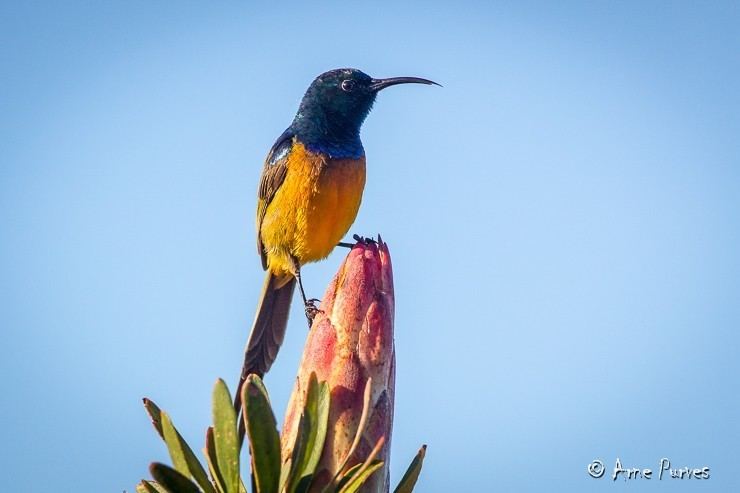
This tame species is a common breeder across its limited range, and is an altitudinal migrant, moving to higher altitudes during the southern summer in search of flowers. It is gregarious when not breeding, forming flocks of up to 100 birds.
Diet
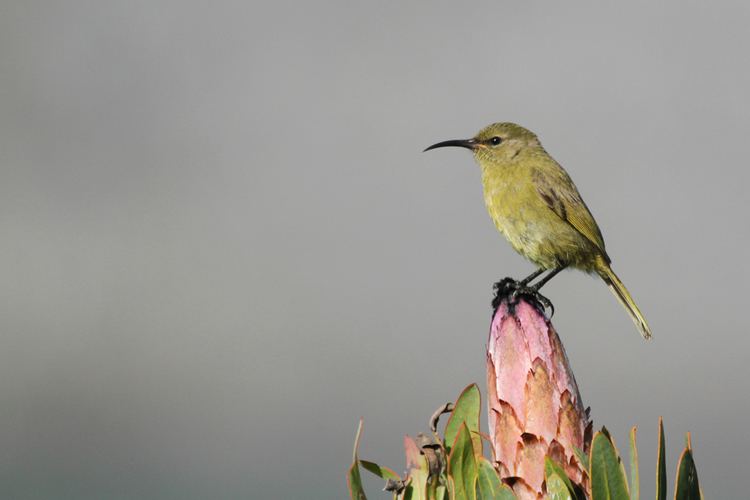
The orange-breasted sunbird subsists on flower nectar, predominantly from ericas and proteas, although it will make use of other types of flowering plants as well. It will also take small insects and spiders, often in flight.
Breeding

The orange-breasted sunbird breeds from February to November (Mainly in May - August) The nest is an oval of rootlets, fine leafy twigs and grass, bound together with spider webs and lined with brown protea fluff. It has a side top entrance, but does not have a covered porch.
Conservation status
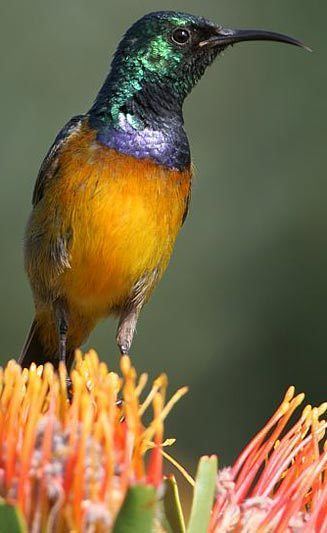
This species is currently classified as Least Concern by the IUCN. It may however be adversely affected by urbanisation, habitat conversion to agriculture, and fynbos fires.
